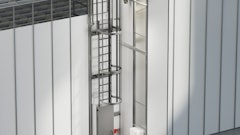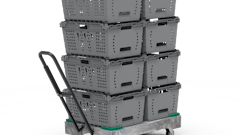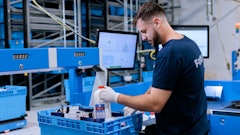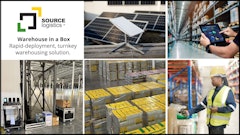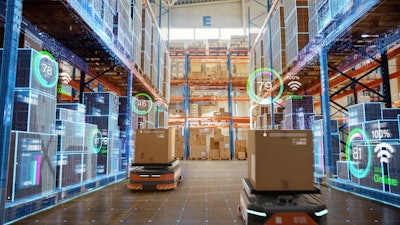
The market for automated micro-fulfillment centers (MFCs) has witnessed a series of challenges to adoption, according to the latest report from Interact Analysis. However, the market opportunity still remains high. In order to reach widespread adoption, several barriers need to be overcome. Assuming these barriers are overcome, Interact Analysis expects the market could grow to an annual revenue of $3.5 billion by 2030.
“The market is in its early stages of growth, with several barriers to adoption in the MFC industry that haven’t been addressed yet by vendors. We believe that addressing these will be the most important factor in determining future growth,” says Rowan Stott, research analyst at Interact Analysis.
“Overall, the automated MFC market is poised for substantial growth, driven by the increasing demand for localized fulfillment and advancements in automation technologies. As major retailers continue to invest in these solutions, the market is set to rapidly expand, offering significant opportunities for vendors and stakeholders in the industry.”
Key takeaways:
- Productivity inhibitors include the integration of manually picked items, with those selected by automation proving inefficient therefore reducing overall system throughput. Advancements in manual in-store fulfillment software have also narrowed the ROI gap, diminishing the appeal of automated solutions. Additionally, macroeconomic factors, such as rising living costs, have also encouraged consumers to favor in-store shopping over delivery services, further dampening demand.
- Furthermore, hidden costs like construction delays and process refinements, along with productivity inhibitors like bottlenecks in the consolidation of manually picked items and MFC replenishment, have also negatively impacted ROI, making the adoption of automated MFCs less attractive.
- Flexibility and scalability are also key. Automation solution providers must be able to provide solutions that cater to different facility sizes while ensuring they enhance the ROI for retailers.
- Overall, the market for automated MFCs is projected to experience significant growth, with a forecast compound annual growth rate (CAGR) of 65% from 2023-2030, reaching a market size exceeding $3.5 billion annually by 2030.
- In 2024 alone, Interact Analysis predicts that grocers will spend $18.5 billion on store labor for online order picking. By comparison, the total warehousing sector will spend about $180 billion on labor, meaning that grocery in-store fulfillment labor cost equates to 10% of the total warehouse labor costs.
- Labor is generally still being used for manual in-store picking but the total addressable market for MFCs through localized fulfillment is increasing. Overall, the e-commerce market value for localized fulfillment is expected to increase from $1.9 billion in 2023 to $4.4 billion in 2030. This is mainly driven by the grocery segment but also other verticals such as healthcare and general merchandise due to the demand for shorter delivery times.










